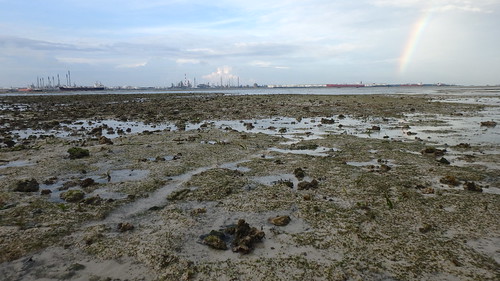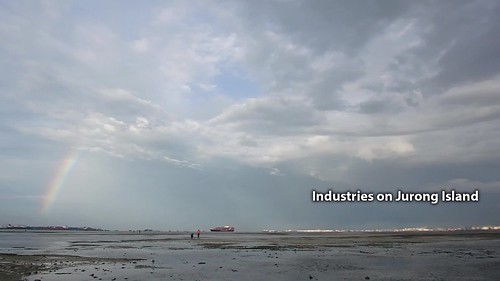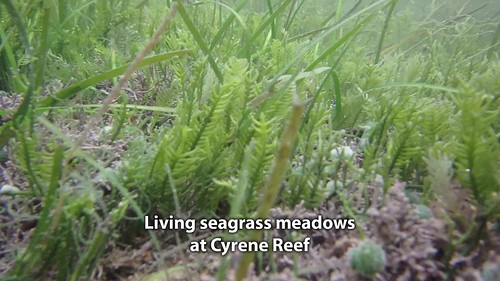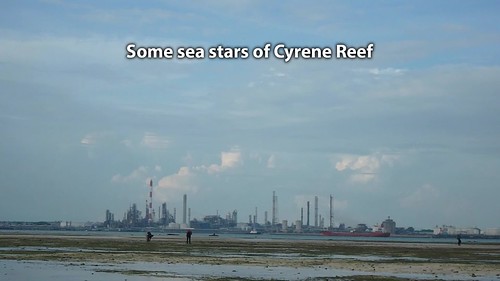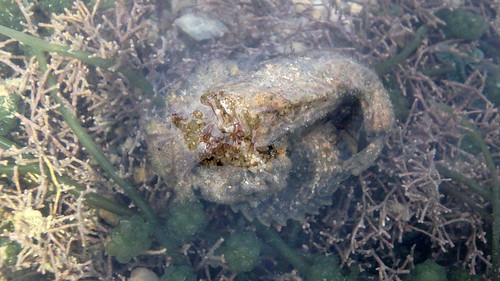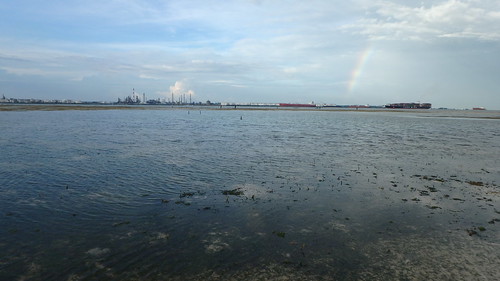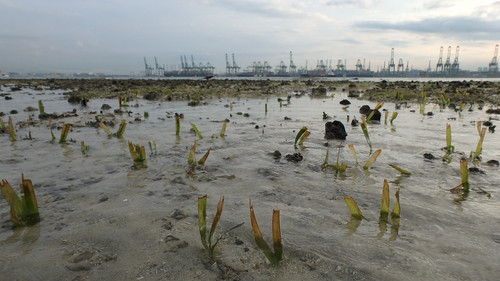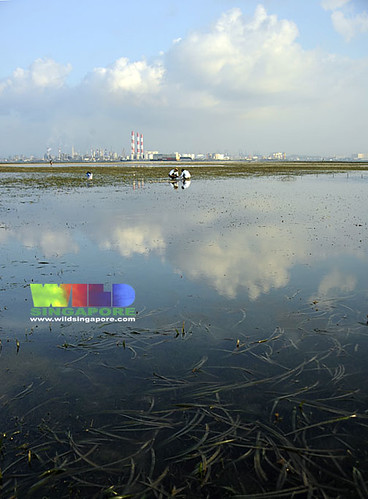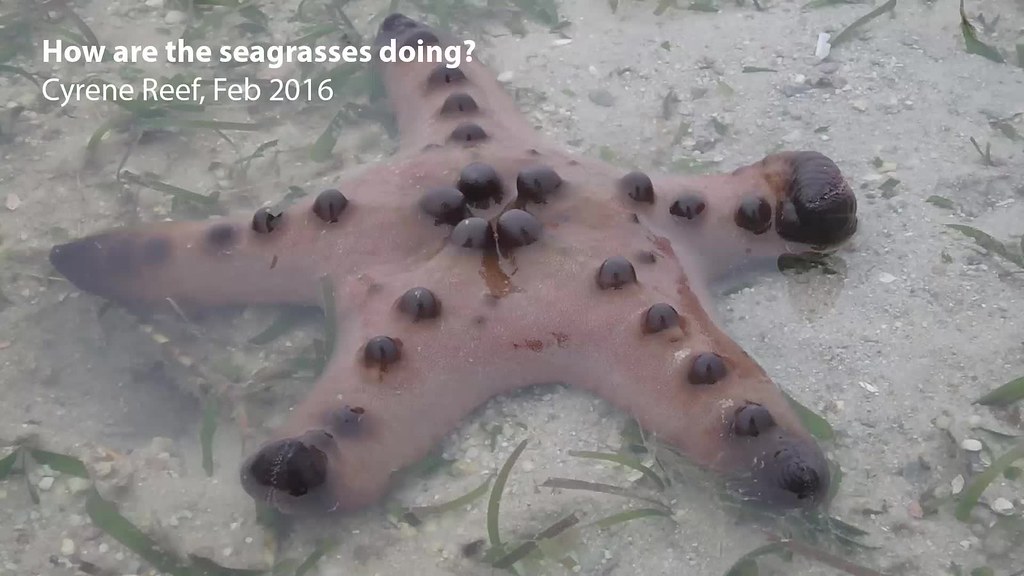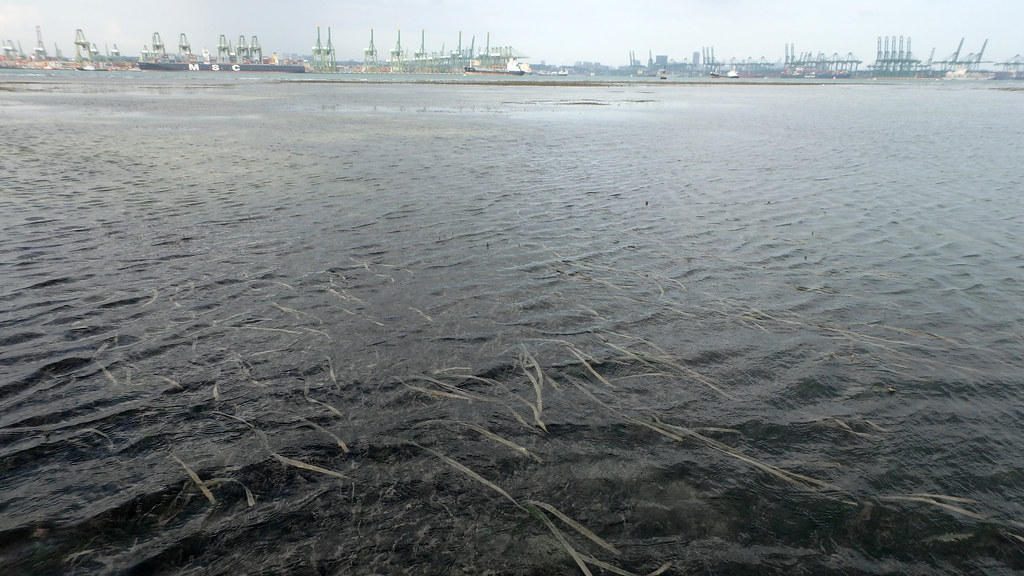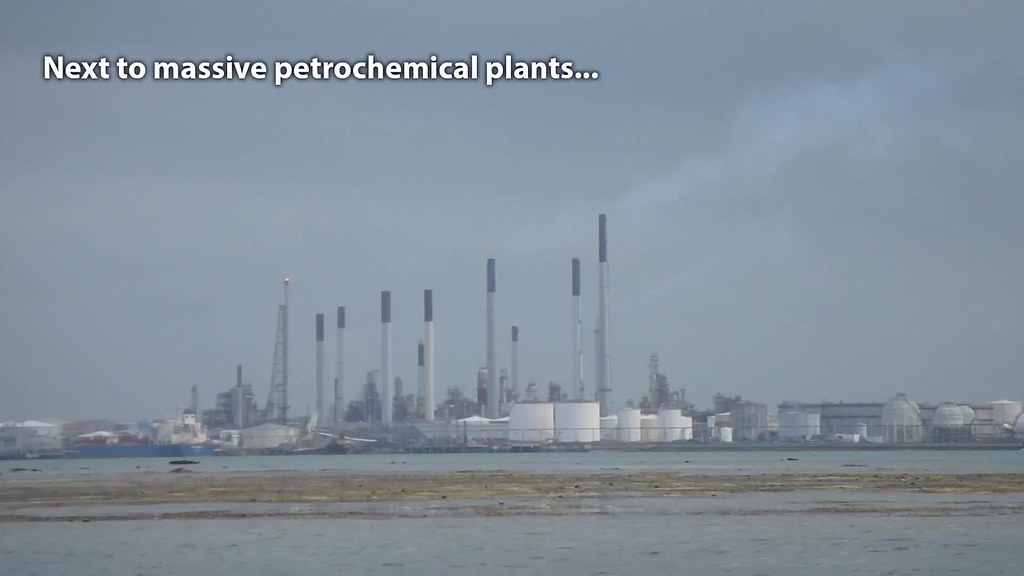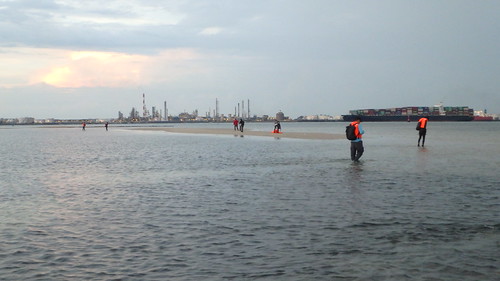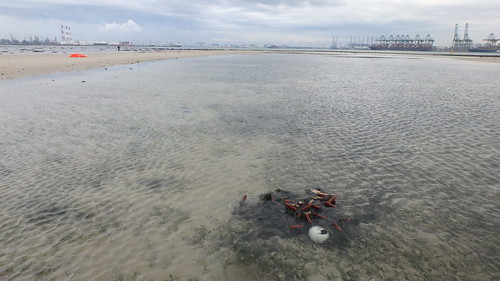Cyrene Reef has lovely seagrass meadows with amazing sea stars and other marine life. I also checked out the deep pool that used to be thick with long Tape seagrass.
Here's a video of the dugong feeding trail, amazingly found in the middle of an Industrial Triangle. Dugong feeding trails are formed when dugongs chomp up seagrasses including their roots, leaving a shallow meandering furrow of about equal width and depth.
The seagrasses are mostly doing well, and many tiny creatures shelter in these meadows.
Today, several of us saw cute Cerberilla nudibranchs. These little creatures forage on the sandy areas.
Kok Sheng's video of it is much cuter.
But the stars of Cyrene are the main attraction. It was nice to see many Knobbly sea stars, one Pentaceraster sea star, one small Cushion star and many Common sea stars. But I am puzzled (and worried) that we have not seen any live sand dollars.
Among the other interesting finds, I saw a tiny Hollow-cheeked stonefish!
The rest of the team also had great finds. Kok Sheng saw a sea star that we've never seen before. And Abel found a Fluted giant clam!
I had a look at the deep pool that used to have very long Tape seagrasses. While it is no longer a bare sandy pool and there are shorter species of seagrasses growing at the bottom, I did not see any long Tape seagrasses. I did see long Tape seagrasses in Feb 2017, perhaps today the tide was higher?
In fact, most of the Tape seagrasses I saw today were still cropped.
Seagrasses in the deep pool over the years
In 2010, the seagrasses in the deep pool drastically declined (together with general loss all over Cyrene) and the pool turned into a sandy one with hardly any seagrass. Here's a look at the deep pool over the years, at its best and its sudden death.
This is what the pool looked like in Jun 2009, with Jeff and Collin of NParks doing a survey of the abundant variety of fishesfound in the pool.
Aug 2010: The pool is still full of lush long Tape seagrass. In this photo, an NPark's team is gently doing a survey of the fishes that are found in the pool. More in this blog post.
May 2010: NParks continued their fish survey and found many different kinds here.

May 2012: It turned into a rather clear pool with the white sandy base showing, and no long Tape seagrasses. Although the Tape seagrasses are still there (but short) and there are some other kinds of seagrasses growing at the bottom, and especially at the shallower edges.
Mar 2012: The big pool which used to be full of long lush Tape seagrass remains bare of Tape seagrasses. But other seagrass species are growing on the sandy bottom.
Aug 2012: There are still lots of seagrasses at the edges of the pool. But in the deeper part of pool, it's very bare of seagrasses. Tape seagrasses here are still cropped short, with not much of other kinds of seagrasses.
Apr 2013: We checked the pool in the middle of the Reef and it's still rather bare. Although there are other kinds of seagrasses especially around the shallower edges, the Tape seagrasses here are still very short, even in deeper parts of the pool.
Aug 2015: Finally, five years later, on this trip I was so relieved to see much more seagrasses growing in the deep pool.

Feb 2017: I saw long Tape seagrasses growing from lush meadows of other seagrass species which are shorter. It looks almost like it used to in 2010.
Here's a video of the deep pool in Feb 2017.
Today the tide is not very low, but we had a great time exploring this huge submerged reef.
This small pile of abandoned nets was removed. We also saw a small sampan laying large fish traps around the reef edge.
I hope Cyrene stays safe until we return.
Photos by others on this trip
- Loh Kok Sheng on facebook.
- Abel Yeo on facebook.
- Lena Chow on facebook.
- Richard Kuah on facebook.
- Jianlin Liu on facebook.
- Marcus Ng on facebook.
- Toh Chay Hoon on facebook.
- Teo Say Chong on facebook.
Others on this trip: Lisa Lim.

